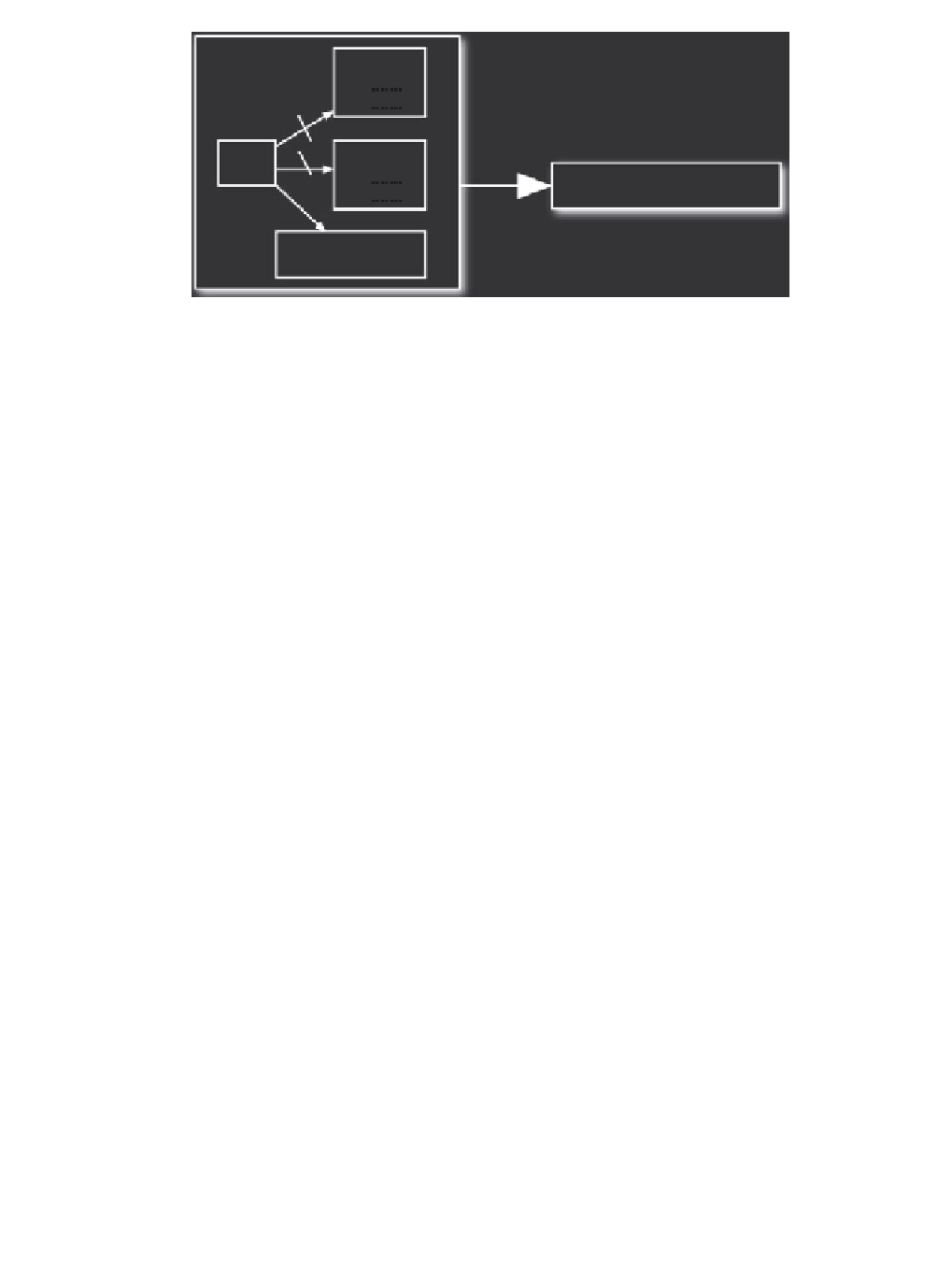Information Technology Reference
In-Depth Information
τ Ξ
Ag
Y
Ξ
AG
X
No Generalizations
Trust
(AgY,
τ
)
AgX
Figure 6.13
Generalization in case of
Ag
X
's ignorance about task's properties and trustee's features.
(Reproduced with kind permission of Springer Science+Business Media
C
2008)
of
Ag
Y
. So we can conclude (see Figure 6.13) that in
caseA
there is no possible rationale,
grounded generalization to other tasks or agents: in fact the set of
(a1, a2, a3) do not permit
generalizations.
In fact, the only possibility for a rational generalization in this case is given from an indirect
generalization by
Ag
X
. For example someone else can suggest to
Ag
X
that on the basis of
his first trustworthy attitude he can trust another agent or another task because there is an
analogy between them: in this case
Ag
X
, trusting this suggestion, acquires the belief for an
indirect generalization. The second case (
caseB
) we consider is when
Ag
X
does not know
Ag
Y
's features, but he knows
(also in this case for several
possible reasons different from inferential reasoning on the match between properties and the
features). In more formal terms:
τ
's properties, and he trust
Ag
Y
on
τ
b1)
Trust
Ag X
(
Ag
Y
,τ
)
b2)
¬
Bel
Ag X
(
f
AgY
≡{
f
1
,...,
f
n
}
)
p
1
,...,
p
k
}∪{
b3)
Bel
Ag X
(
τ
≡{
p
1
,...,
p
m
}
)
Despite the ignorance about
Ag
Y
's features (
b2
),
Ag
X
can believe that
Ag
Y
is trustworthy on
a different (but in some way analogous) task
τ
(generalization of the task) just starting from
the previous cognitive elements (
b1
and
b3
) and from the knowledge of
τ
'
's properties. He
τ
and decide if and when to trust
Ag
Y
on a different task. It is not possible to generalize with respect to the agents because there
is no way of evaluating any analogies with other agents.
So we can conclude (see Figure 6.14) that in the case (
B
) task generalization is possible: in
fact the set
(b1, b2, b3) permits task generalizations but does not permit agent generalizations.
Also, in this case we can imagine an
indirect
agent generalization. If
Ag
X
trusts a set of
agents
AG1
can evaluate the overlap among the core properties of
τ
and
τ
,
n
≡
{
Ag
Y
,
Ag
W
...
,
Ag
Z
}
on a set of different but similar tasks
T1
≡
{
τ
,
...
,
τ
}
(he can evaluate this similarity given his knowledge of their properties) he can trust each of
the agents included in
AG1
on each of the tasks included in
T1
.
The third case (
caseC
) we consider is when
Ag
X
does not know
τ
's properties, but he
knows
Ag
Y
's features, and he trusts
Ag
Y
on
τ
(again for several possible reasons different from

Search WWH ::

Custom Search